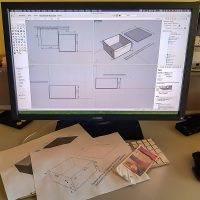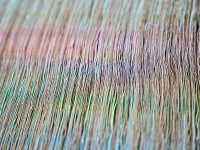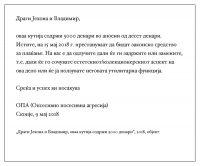For the situation to be even more paradoxical, it is important to emphasize that the practices of OPA are “context based, non-collectible and either ephemeral or distributed in multiple copies”, since they are “starting from the standpoint that art should belong, and be accessible to everyone”.[14]
On the private/public relations
One of the definitions of politics is the regulation of the relation and the boundary between the public and the private. The new situation, defined by the development of digital technologies and the media, seriously complicates this relationship. On the complicated relation of freedom and responsibility, I often recall the reclusive attitude of the Irish playwright Samuel Beckett. As Radomir Konstantinović noted, for him the freedom is not a freedom for the public, but a “freedom off the public”[15]. Although nowadays, in the general euphoria of highlighting the importance of political articulation in the public space the abovementioned attitude can be interpreted as escapism, freedom from public does not necessarily mean an actionless being or passivity, but a freedom to act without the necessity of superficial loudness instead of deeds in front of the heavy drapery of transparency.
Already, many are sick and tired of the fiercely loud but empty speeches that hide the emptiness, a psychotic logorrhea that suppresses and exacerbates any attempt for thoughtful, critical and consolidated action against the panic of urgency.
The art scene in Macedonia, under the pressure of being lost both in space and in time, through the often unjustified lamentation of being marginalized, is focusing on losing truly valuable and challenging “creations”, which, if we agree, we could still call artistic, despite the prospect of the end of the modern concept of art.
Therefore, probably, in all this confusion that additionally inhibits artistic creativity and the need for debate, one should not miss the opportunity to talk about seemingly the most minimal gestures that open serious issues, regardless of their primary purpose.[16]
A Trap, Amidst the Debate on Effectiveness and Utilitarianism
In the last few decades, under the influence of neo-liberal capitalism, art has opened to post-conceptualism and a variety of engaged practices that emphasize the socio-political role of art. In the front, several tendencies which completely excluded the aesthetic dimension of art emerged, at the expense of its utilitarian, political potential and power for direct changes in social reality. But this is nothing new, if we recall the solutions offered in the first decades of the 20th century by some strands of the historical avant-garde, such as De Stijl, Bauhaus and the Russian constructivists. Instead of indirectly acting in the symbolic domain of art, they replace it with a direct shaping of the material world with which people are in immediate contact.
14. http://www.o-p-a.org/about.html
15. Radomir Konstantinović, Beket, prijatelj (Beograd: Otkrovenje, 2000), 24-25.
16. These are just few of the possible questions posed by the decision of a couple, which is by chance an artistic duo, and their gesture/gift that is, incidentally, intended for another couple, who by chance or not, are art historians, friends and associates of the artists, who in their private collection already have several works by OPA art group.







